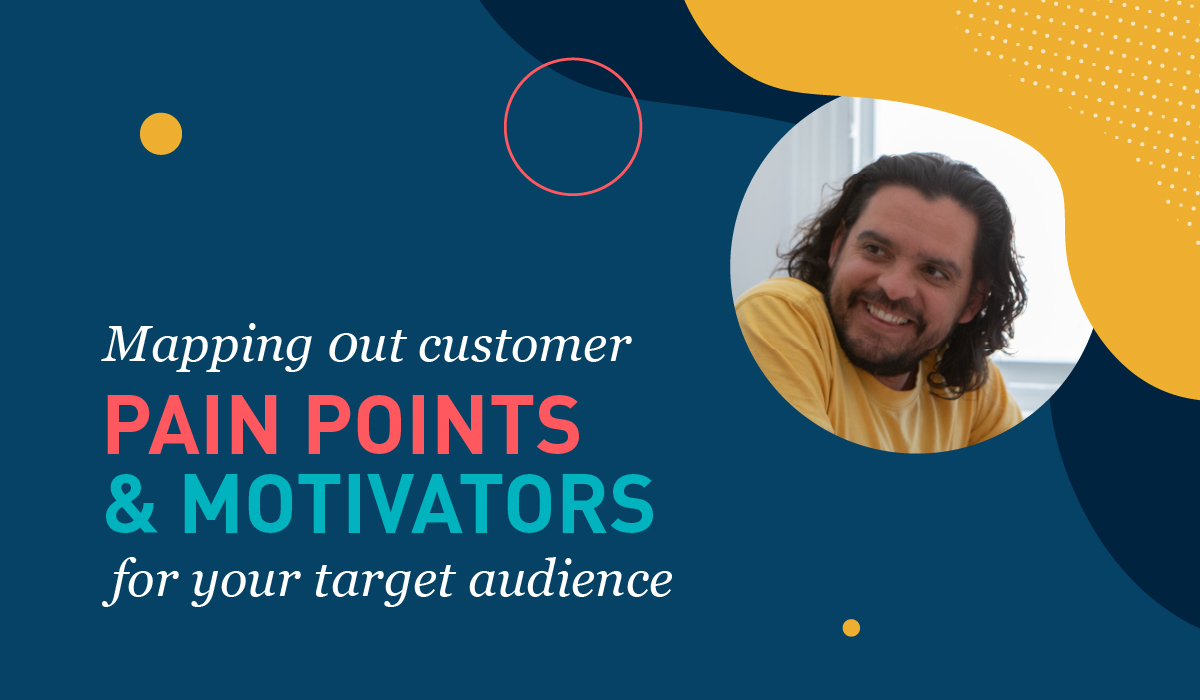
Understanding customer pain points and motivators are important for any successful marketing campaign. It allows your businesses to create tailored content, products, and services that efficiently address the specific needs of your target audience.
A central aspect of this process is creating a comprehensive persona for your customers, ensuring your content is both engaging and relevant.

Defining customer pain points and motivators
What are the four types of customer pain points?
Customer pain points are the challenges, frustrations, or problems faced by consumers in their personal or professional lives. Addressing these pain points with your products or services can create trust and build strong relationships between your brand and your audience.
Pain points can generally be divided into four categories, each with its own challenges:
1. Financial pain points:
Customers facing financial difficulties seek cost-effective solutions that align with their budget constraints.
2. Productivity pain points:
Customers with productivity pain points seek efficient solutions that optimise work output and save time, often related to functionality, practicality, or cumbersome tools or processes.
3. Process pain points:
Addressing process pain points means streamlining tasks and making processes more intuitive for users who face challenges such as navigating a complicated user interface or struggling to find specific information.
4. Support pain points:
Support pain points require timely, empathetic, and effective help to ensure customers feel valued and well-taken care of, ultimately leading to a positive brand experience.
What are customer motivators?
Customer motivators refer to the factors that drive consumers to take action or make purchasing decisions. These can range from personal beliefs and values to emotional triggers and peer influences. Identifying and addressing customer motivators can be a powerful tool in driving conversions, customer satisfaction, and brand loyalty.
Identifying your target audience’s pain points and motivators
To map out your target audience’s pain points and motivators, follow these four steps:
1. Conduct in-depth research
Start by researching your target audience’s demographics, interests, and preferences. Draw on a combination of survey data, online forums, social media conversations, and competitor analysis to gain insights into common concerns and desires among your target market.
2. Create a customer persona
Building a comprehensive customer persona with demographic, psychographic, and behavioural information is crucial to understanding and empathising with your audience. A well-developed persona will enable you to visualise your customers’ challenges and motivations, making it much easier to address them with tailored content, products, or services.
3. Analyse customer journeys
Take the time to evaluate the entire customer journey, from product discovery to after-sales support. Identify potential pain points or obstacles that could be encountered and consider how you can address them in your content marketing efforts to improve the overall customer experience.
4. Utilise customer feedback
Regularly gather feedback from your customers through surveys, reviews, and testimonials. Such feedback can provide valuable insights into pain points and motivators that you might not have considered or been aware of otherwise.

Using pain points and motivators in your content marketing strategy
Once you have identified the pain points and motivators for your target audience, you can incorporate this knowledge into your content marketing strategy in the following ways:
1. Create engaging and solution-oriented content
Developing content that genuinely addresses your target audience’s pain points will not only engage customers but also position your brand as an authority and problem-solver in your niche. This can result in increased consumer trust and a loyal customer base.
2. Use emotional triggers to drive action
By understanding customer motivators, you can tap into their emotions and create content that drives them to take action. Highlight the benefits of your product or service and demonstrate how it addresses their motivators through relevant success stories, case studies, or testimonials.
3. Optimise for SEO
Integrate relevant keywords and phrases related to your target audience’s pain points and motivators into your content to improve your search engine rankings, drive more organic traffic, and reach a wider audience.
4. Personalise your messaging
Customise and personalise your marketing messages for different customer segments based on their identified pain points and motivators. This can lead to more meaningful engagements and conversions.
5. Monitor and adjust your strategy
Continuously track the performance of your content marketing efforts to ensure they remain aligned with your target audience’s evolving pain points and motivators. Monitor analytics data, customer feedback, and industry trends to identify potential changes in consumer preferences or shifts in market conditions. Regularly assess and adjust your strategy, as needed, to maintain an engaging and effective marketing campaign.
6. Test and experiment with different formats
Different content formats may appeal to varying customer profiles and preferences. Experiment with various types of content — such as blogs, social media posts, videos, infographics, and podcasts — to find the most effective means of addressing your audience’s pain points and motivators. Pay attention to engagement metrics and feedback to determine which format resonates best with your target audience and adjust your strategy accordingly.
7. Collaborate with influencers and industry experts
Partner with influencers and industry experts who share similar target audiences, pain points, and motivators. Collaborations can lend credibility to your brand and provide insights into new trends, solutions, or practices. Leverage these partnerships to create engaging content that not only educates and adds value for your audience but also demonstrates your commitment to addressing their challenges and aspirations.
Get started on your creative content strategy
By thoroughly understanding and mapping the pain points and motivators of your target audience, you can develop a robust and effective content marketing strategy that delivers tangible results. Continuously monitor and adapt your efforts to stay in tune with your audience’s needs and preferences, ensuring long-lasting success and growth for your brand.
Get in touch to book a 15-minute chat.








